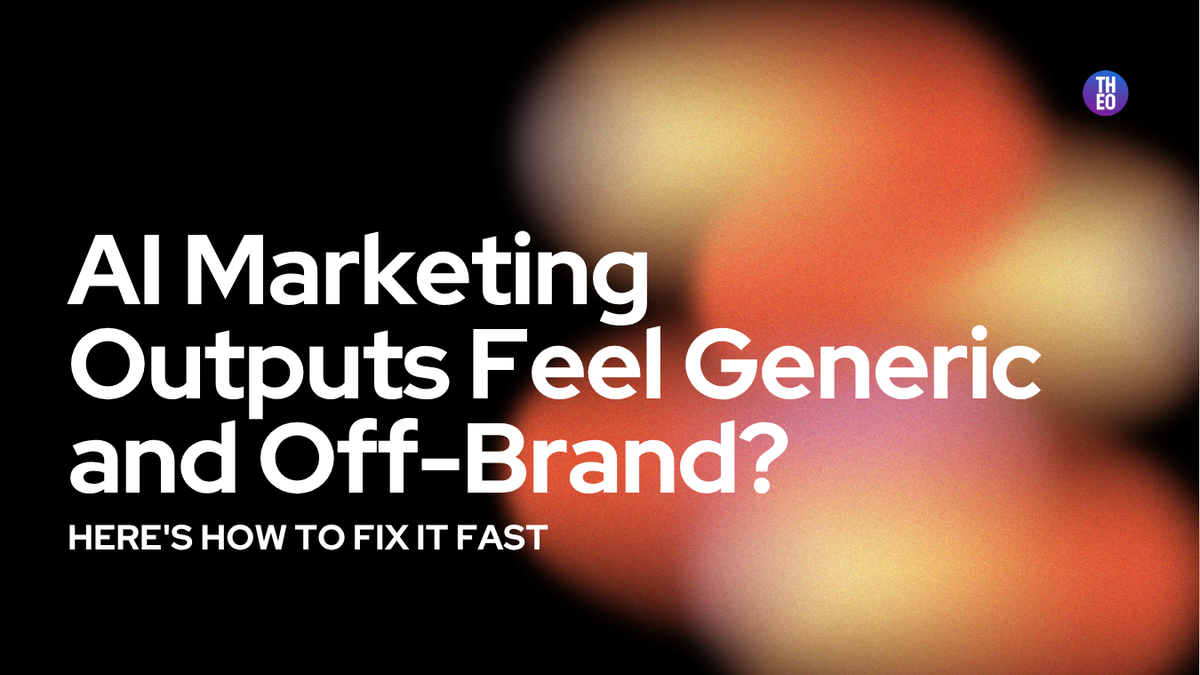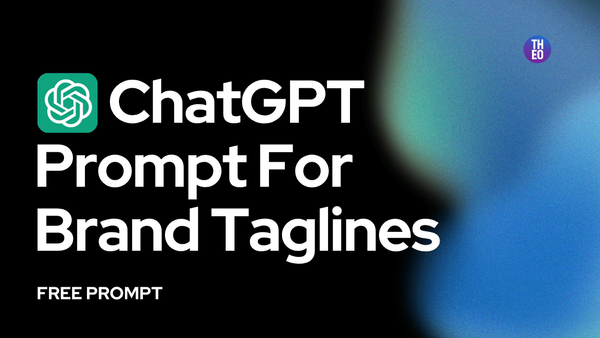AI Marketing Outputs Feel Generic and Off-Brand? Here's How to Fix It Fast

You stare at the AI-generated content for your latest campaign and sigh. It's technically correct but sounds nothing like your brand. The tone is off, the personality is missing, and it feels like it could have been written for any company in any industry.
If you're spending more time editing AI outputs than you would writing them from scratch, you're not alone.
According to research, over 50% of people can recognize AI-generated content, and 52% are less engaged by it.The generic, robotic quality of unrefined AI outputs isn't just annoying—it's actively harming your marketing effectiveness.
But here's the good news: the problem isn't AI itself. The problem is how you're feeding your business context to AI. Let me show you how to fix it in the next 30 minutes.
Why Your AI Marketing Outputs Sound Generic (The Root Problem)
AI language models don't inherently understand your brand. They produce content based on patterns they've learned from vast amounts of data—most of which has nothing to do with your specific business.
The three main reasons your AI marketing outputs feel generic and off-brand:
- Insufficient business context: AI has no idea what makes your brand unique unless you explicitly tell it
- Inconsistent inputs: Different team members explain your brand differently, creating inconsistent outputs
- Context switching nightmares: You're constantly shifting between products, audiences, and campaigns, without a systematic way to communicate these differences to AI
The typical approach of adding a brief brand description to each prompt simply doesn't work. It's too shallow, too inconsistent, and impossible to maintain across a busy marketing team.
The BRAND-AI Framework: Transform Generic Outputs into On-Brand Content
Instead of tedious prompt engineering or endless editing, you need a systematic approach to teaching AI your brand voice. I've developed a practical framework called BRAND-AI that any overwhelmed marketer can implement in less than 30 minutes.
B - Baseline Voice Documentation
Start by creating a simple one-page document that defines your brand voice with these elements:
- 3-5 adjectives that describe your tone (example: "friendly, authoritative, straightforward")
- Writing style preferences (sentence length, use of jargon, formality level)
- Word and phrase choices (words you use frequently and words you avoid)
Action template:
We write with: [short/medium/long] sentences and [simple/technical] language
Words we use often: [list 5-10 brand-specific words]
Words we avoid: [list 5-10 words that don't fit your brand]
R - Representative Examples
AI learns best from examples. Collect 3-5 pieces of content that perfectly represent your brand voice:
- Social media posts
- Email communications
- Blog articles
- Customer-facing documents
Choose content that has received positive feedback and truly embodies your brand personality.
Action template:
Example 1: [paste short excerpt] What makes it great: [explain key elements]
Example 2: [paste short excerpt] What makes it great: [explain key elements]
Example 3: [paste short excerpt]What makes it great: [explain key elements]
A - Audience Context
Your brand speaks differently to different audience segments. Document how your tone adjusts based on:
- Customer persona being addressed
- Stage in customer journey
- Product/service being discussed
Action template:
Voice adjustment: [more formal/more casual/more technical/etc.]
When speaking to [Persona B], we emphasize: [key aspects]
Voice adjustment: [more formal/more casual/more technical/etc.]
N - Non-Examples (What Not to Sound Like)
One of the most powerful ways to guide AI is showing what NOT to do. Create "anti-examples" that show:
- Generic content you want to avoid
- Competitor tones you don't want to mimic
- Common AI pitfalls (overly formal, robotic language)
Action template:
Bad Example 1: [paste generic content]
Why it's wrong: [specific problems]
Bad Example 2: [paste content with wrong tone]
Why it's wrong: [specific problems]
D - Document Format Specifications
Different content types require different tones. Specify how your brand voice adapts to:
- Social media posts
- Email newsletters
- Blog articles
- Landing pages
- Product descriptions
Action template:
Key structure elements:
- [format element 1]
- [format element 2]
- [format element 3]
A - AI Tool Configuration
Once you've created your brand voice documentation, set up your AI tools to consistently use it:
- ChatGPT: Use Custom Instructions
- Claude: Use Projects or System Prompt
- Jasper/other tools: Use Brand Voice features
Action template (ChatGPT Custom Instructions):
Our brand voice is [key adjectives].
Please follow these guidelines when creating content:
1. Use [description of writing style]
2. Emphasize [key themes/values]
3. Avoid [problematic elements]
4. Use these terms: [preferred terminology]
5. Avoid these terms: [terms to avoid]
Here are examples of our ideal tone: [paste 2-3 short examples]
Here are examples of what NOT to sound like: [paste 1-2 anti-examples]
I - Implementation Testing
The final step is to test your brand voice setup with real content needs:
- Generate a sample piece of content
- Compare it to your ideal examples
- Identify any gaps or issues
- Refine your brand voice documentation
- Test again until satisfied
Action checklist:
- Does it sound like your brand?
- Is the tone appropriate for the audience?
- Does it avoid generic AI language?
- Is it engaging and authentic?
- Would your audience believe a human wrote it?
Putting It All Together: Your 30-Minute Brand Voice Transformation
Here's how to implement the BRAND-AI framework in just 30 minutes:
Minutes 1-5: Complete the Baseline Voice Documentation template
Minutes 6-15: Collect your Representative Examples and create Non-Examples
Minutes 16-20: Document Audience Context adjustments
Minutes 21-25: Specify Document Format variations
Minutes 26-30: Configure your AI Tool and run an Implementation Test
The result? AI outputs that consistently match your brand voice across all marketing channels—without constant babysitting or endless editing.
The Business Context Connection: Why This Works
Here's the thing about solving the generic AI output problem—it's not just about better prompts. It's about systematic business context management.
When your AI tools have a complete understanding of your business context—including brand voice, audience segments, product information, and strategic positioning—they can produce outputs that truly reflect your unique brand identity.
That's the difference between spending 12+ hours weekly explaining your business to AI tools versus having an AI assistant that truly understands your business from day one. When your business context is properly organized, AI stops producing generic outputs and starts generating content that sounds authentically like your brand.
Marketers who take a systematic approach to business context save 5-10x the time on content creation while getting consistently on-brand results. Instead of constant revisions and repetitive explanations, they focus on strategic work that drives real business growth.
Ready to transform your AI marketing outputs from generic to genuinely you?
Start with the BRAND-AI framework today, and see the difference that systematic brand voice management makes. Your marketing will be more consistent, more authentic, and more effective—and you'll reclaim hours of time previously spent fixing generic AI outputs.
For even faster results, consider a systematic business context solution that organizes everything about your positioning, products, and customers so any AI assistant gives you spot-on marketing outputs from day one.
💡 Wait, what if this sprint process was just the tip of the iceberg? What if you could skip all manual work and get an AI that automatically captures your complete business DNA, then creates system instructions so sophisticated your assistant becomes 10x more strategically intelligent - with just a 2-minute setup?
See how → or get weekly AI marketing tips that actually work for small businesses.





